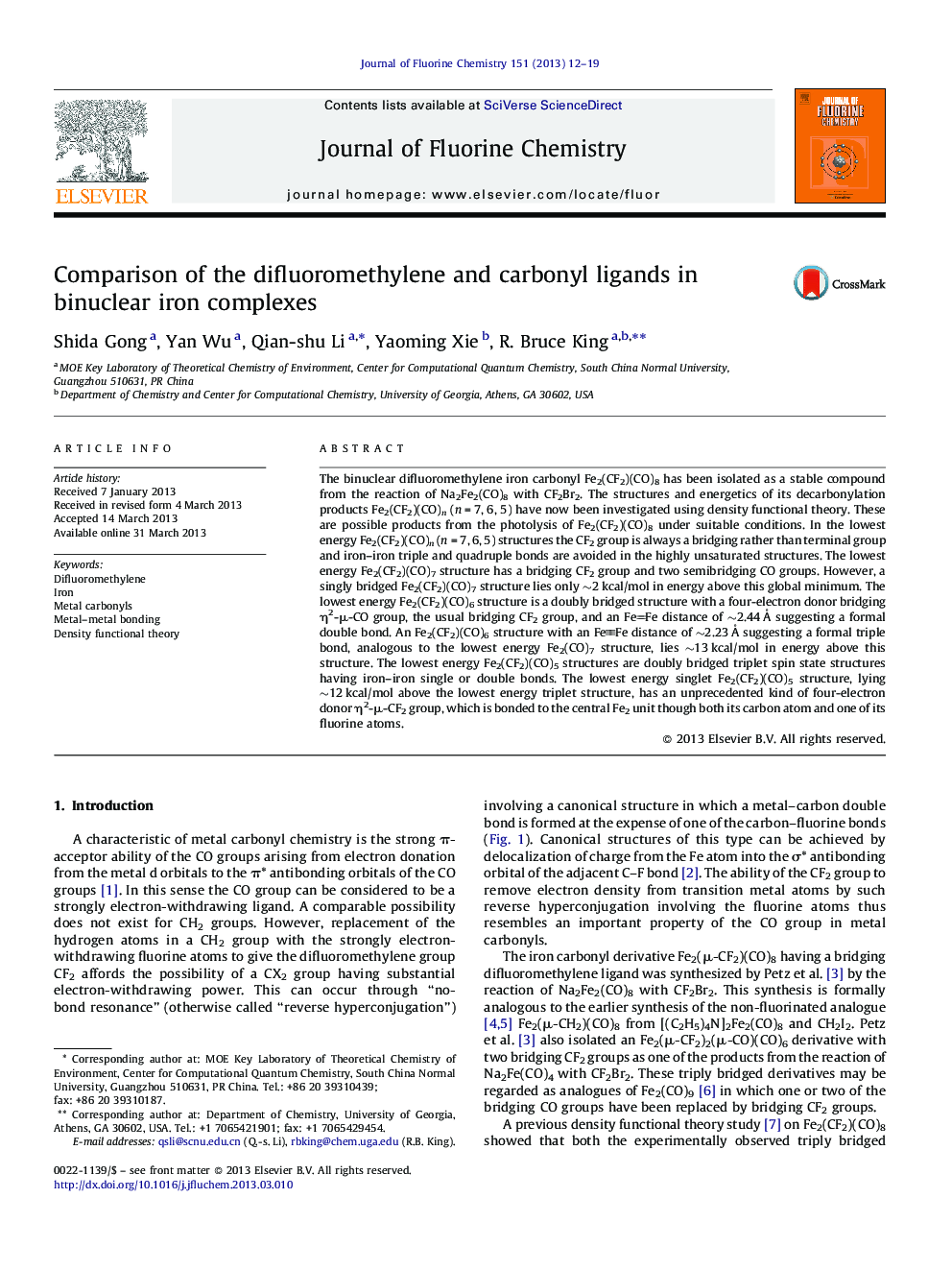| Article ID | Journal | Published Year | Pages | File Type |
|---|---|---|---|---|
| 1314580 | Journal of Fluorine Chemistry | 2013 | 8 Pages |
•The lowest energy Fe2(CF2)(CO)n (n = 7, 6, 5) structures have a bridging rather than terminal CF2 group.•Iron–iron triple and quadruple bonds are avoided in the highly unsaturated Fe2(CF2)(CO)n (n = 6, 5) structures.•The lowest energy singlet Fe2(CF2)(CO)5 structure has an unprecedented kind of four-electron donor η2-μ-CF2 group.
The binuclear difluoromethylene iron carbonyl Fe2(CF2)(CO)8 has been isolated as a stable compound from the reaction of Na2Fe2(CO)8 with CF2Br2. The structures and energetics of its decarbonylation products Fe2(CF2)(CO)n (n = 7, 6, 5) have now been investigated using density functional theory. These are possible products from the photolysis of Fe2(CF2)(CO)8 under suitable conditions. In the lowest energy Fe2(CF2)(CO)n (n = 7, 6, 5) structures the CF2 group is always a bridging rather than terminal group and iron–iron triple and quadruple bonds are avoided in the highly unsaturated structures. The lowest energy Fe2(CF2)(CO)7 structure has a bridging CF2 group and two semibridging CO groups. However, a singly bridged Fe2(CF2)(CO)7 structure lies only ~2 kcal/mol in energy above this global minimum. The lowest energy Fe2(CF2)(CO)6 structure is a doubly bridged structure with a four-electron donor bridging η2-μ-CO group, the usual bridging CF2 group, and an FeFe distance of ~2.44 Å suggesting a formal double bond. An Fe2(CF2)(CO)6 structure with an FeFe distance of ~2.23 Å suggesting a formal triple bond, analogous to the lowest energy Fe2(CO)7 structure, lies ~13 kcal/mol in energy above this structure. The lowest energy Fe2(CF2)(CO)5 structures are doubly bridged triplet spin state structures having iron–iron single or double bonds. The lowest energy singlet Fe2(CF2)(CO)5 structure, lying ~12 kcal/mol above the lowest energy triplet structure, has an unprecedented kind of four-electron donor η2-μ-CF2 group, which is bonded to the central Fe2 unit though both its carbon atom and one of its fluorine atoms.
Graphical abstractThe lowest energy Fe2(CF2)(CO)n (n = 7, 6, 5) structures have bridging rather than terminal CF2 groups and avoid iron–iron triple and quadruple bonds in the highly unsaturated structures.Figure optionsDownload full-size imageDownload as PowerPoint slide
